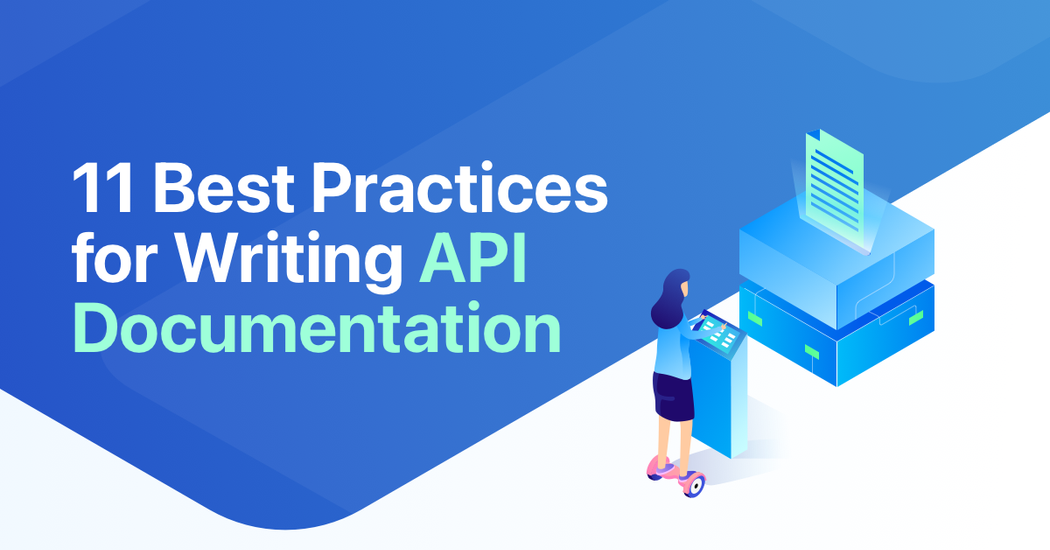Is there a way to have perfect API documentation? We'll try to answer this question as we introduce 11 different API documentation strategies.
Table of Contents
- What is API Documentation
- Types of API Documentation
- Best Practices
- How to Generate Useful API References
- Take your API Documentation to the Next Level
- The Next Generation of API Management
1. What is API Documentation
Before I go ahead and explain what would be the best practices for writing API docs, let’s cover some basics. API documentation is a type of technical writing that describes how to use an API. It can include everything from how to make a request, to the different response codes an API might return.
You need to make sure your API documentation is consistent with existing developer docs, which means you must understand what developers want when they read it -- this can be tricky. API documentation is a critical part of any application's success. The best API documentation strategies help you create a resource that is thorough and easy to use. So, how do you go about creating API documentation that meets these goals?
2. Types of API Documentation
There are many different types of API documentation, and each has its own strengths and weaknesses. The most common types are:
1. Reference documentation: This type of API documentation is a comprehensive description of all the objects and methods an API exposes. It can be a great reference for developers, but it's often difficult to read and understand.
2. Tutorials: API tutorials are a great way to help developers get started using your API. They can walk developers through a series of example requests and responses, making it easy for them to understand how everything works conceptually without having access right away by downloading the software or coding examples (examples may or may not require registration).
3. Quickstart guides: Quickstart guides are a great way to help developers get up and running with your API as quickly as possible. They typically include a few simple examples and a brief description of the necessary steps to get started.
4. Developer guides: Developer guides are a more in-depth look at how to use your API. They include explanations of how to make specific requests and how to use the API's features. The guides usually contain code samples so you can see exactly what makes up each call rather than reading long descriptions elsewhere about every valid parameter used in every call along with their default values if needed—which doesn't offer much real value when exploring an API.
When creating API documentation, it's important to consider the different types of users your API will have. Reference documentation is perfect for people who just want to know what's available and how to use it. Tutorials are great for people who want to get started right away. Quickstart guides are perfect for people who just want to get up and running quickly. Developer guides are perfect for people who want to understand how everything works.

3. Best Practices
The best way to write API documentation is to think about your audience and what they need. You don't want to overwhelm people with too much information, but you also don't want to leave out important details. The following tips can help you write the right kind of API documentation for your user base.
1. Start with reference documentation: Reference documentation is a list of all the objects and methods an API exposes, along with a description of each. This is the perfect place to start when writing API documentation. It gives developers an overview of everything that's available and how it works.
2. Offer tutorials: Tutorials are a great way to help developers get started using your API. They show developers how to make specific requests and use the API's features.
3. Provide quickstart guides: Quickstart guides are a great way to help developers get up and running with your API as quickly as possible. They contain code samples and instructions on how to use your API.
4. Write developer guides: Developer guides are a more in-depth look at how to use your API. They include explanations of how to make specific requests and how to use the API's features.
5. Offer sample code: Sample code is a great way to help developers get started using your API. It contains code samples that show how to use your API's features.
6. Use clear language: When writing API documentation, it's important to use clear language that everyone can understand. This means avoiding technical jargon and using simple, easy-to-read sentences.
7. Check for typos: One of the most common mistakes developers make is writing documentation that's riddled with typos. Checking your documentation for typos is essential to ensuring that it's easy to read and understand.
8. Use examples: Whenever possible, use examples to illustrate how your API works. These examples can be found within the reference area, docs, or example sections of apps you've used yourself--they can be anything that helps explain the concept.
9. Use tables and figures: When it comes to documentation, using tables and figures can be a great way to break down complex concepts into easy-to-understand sections. This makes it easier for developers to scan through your documentation and find the information they need.
10. Be up-to-date: As your API evolves, it's important to update your documentation to reflect the changes. This ensures that developers have the most up-to-date information when using your API. This ensures that developers have the most up-to-date information when using your API. By following these simple tips, you can ensure that your API documentation is easy to read and understand.
11. Make it easy for yourself and generate API docs automatically with Treblle. Just use our easy-to-use wizard and in a few minutes, you'll have high-quality API docs that will help your developers get up to speed quickly. Treblle will automatically change your docs as you develop API at any stage of development. The result is less work for you and 100% clear and accurate documentation.
If you want a demo to see how Treblle can help you, book a demo here or check out our free plan (with all the features included) here.

4. How to Generate Useful API References
API references are an important part of API documentation. They provide a comprehensive outline of all the API's features and how to use them. But, unfortunately, many developers create API references that are difficult to read and understand.
If you want to generate useful API references, follow these simple tips:
1. Use headings and sections: Make sure that your references are easy to read by using headings wherever necessary (usually where different levels or "sections" are involved). This will help developers scan through your reference and find the information they need.
2. Generate an API specification with a machine-readable description of your API: This will allow developers to easily parse and understand your API. Don't forget this! You might think humans would just skim over such things but people make mistakes! Ensure that your description is machine-readable so that developers can actually use it!
3. Use summaries and examples: Summaries provide a quick overview of an API method, while examples show developers how to use the API. This is essential information for any API reference.
5. Take your API Documentation to the Next Level
If you want to take your API documentation to the next level, consider using a tool like Treblle. Treblle is a powerful API documentation generator that can help you automate the process of creating high-quality API docs. With Treblle, you can change your docs as you develop API at any stage of development. The result is less work for you and 100% clear and accurate documentation.
Let’s look at some best practices for documenting APIs:
- Have a person in charge. This doesn't have to be their whole job, but it is very important to have a person who understands the documenting process and where everything is. This is a glue person that will keep your developer team together and ensure everybody has everything they need to do their job.
- Have your teams involved. You might be surprised at how much insight might come in from different teams like engineering, marketing, product, support, and others. With Treblle you can add an unlimited number of team members to your API. When you need feedback or just want to show one of the API calls (like an error), you can simply open that specific call and tag the relevant team member.
- Keep updating. If you truly want to be on the next level then this is a must. It also sounds very hard and maybe even dull (at least my developers tell me that updating and writing docs aren't really a fun-time party-like activity). I guess that was also one of the reasons why Treblle generate docs automatically as soon as a call is made.
6. The Next Generation of API Management
I am not saying there aren't good solutions already out there. But if you are looking for an API management platform that can do it all, take a look at Treblle. It will truly propel you into the next generation of API management.
We already stressed the importance of having great API docs, but Treblle isn't just about that. There are many features that might get you excited. It's easy to get started with over 12 SDK for languages like Java, Node.js, Ruby on Rails, PHP, Laravel, GO and more. You'll set it up in just a few lines of code. The features are aplenty - 1 click API testing, real-time API monitoring (does not impact your API in any way), API Analytics, API Scoring and more.
Want to give it a try? Book a demo here or try out our free plan with all of the features and 30 thousand API calls included for 1 month.
Staying in tune with your APIs was never made easier than this.






